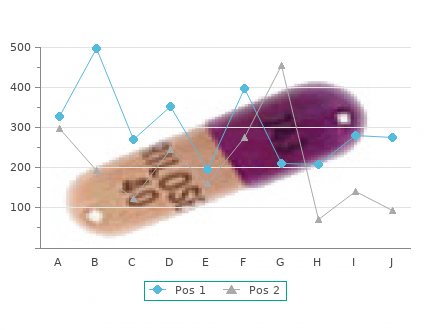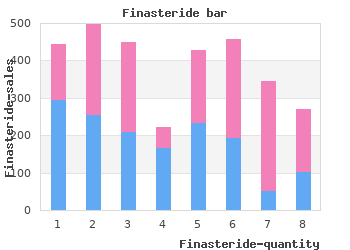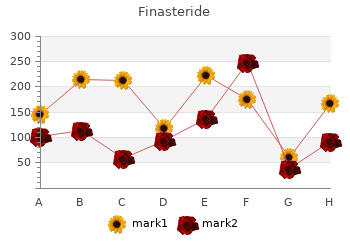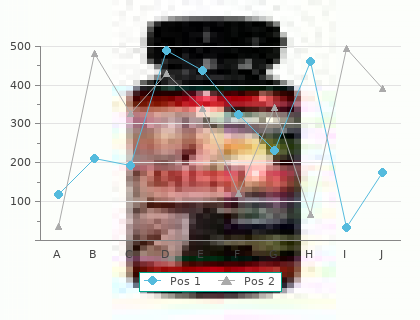Finasteride
By G. Jerek. University of Indianapolis.
When they drafted the proposal purchase 1 mg finasteride with amex, health-administration offcials noted both the mounting production of hormones and their standardization on the basis of biological assays, which made an assessment of composition possible. Attenuated or non-attenuated viruses, modifed or non-modifed toxins as well as the various products of bacterial origins that might be use, in whatever form, for diagnosis, prophylaxis or therapeutic intervention can only be distributed, against payment or free, if they have been authorized by the government following the recommendations of either the National Academy of Medicine or the High Counsel for Public Hygiene based on an examination of their origins, their designation, their mode of preparation, their means of identifcation and their active principles. All substances of organic origins that might be inoculated for therapeutic purposes are subject to the same regulation. The same channels that have granted this permission to produce and sale may be used to revoke the authorization. The products falling under this law are subject to an inspection by a committee that the competent minister will designate. The applicant will pay all costs of an inquiry aiming at an authorization while the state will pay all costs regarding a control. All the products considered under section 1 are prescriptions to be delivered by a pharmacist. Physicians may also distribute them to their clients but only in case of emergency and when the use of the product requires their intervention. Of these 251, 72 died of tuberculosis, most of them in two to fve months and all but one before the end of the frst year. In addition, 1 5 suffered from clinical tuberculosis but eventually recovered, and 44 became tuberculin-positive but remained well. The role of professional control and surveillance remained all the more important as this weak administrative regulation was hardly balanced by strong industrial regulation. Schering, sex hormones, and the rise of industrial regulation in Germany Schering’s contribution to the industrialization and molecularization of sex hormones has been discussed elsewhere. Three levels of practices need to be distinguished, which expanded in the 1930s in parallel to the scaling up of production and with the shift from preparations based on the manipulation of pregnant-mare urine to pure biochemical entities, synthesized by using cholesterol as raw material. These three types of regulatory activities are rooted in the aims gradually associated with the industrial development of the German drug market mentioned above when discussing Madaus’s operations: to standardize, to ensure quality control, and to control prescription practices. First, higher productivity and reduced costs were associated with the quest for well-defned protocols and homogeneous preparations. When weighing investments against benefts, Schering always considered the partial synthesis of steroid hormones out of cholesterol as the best solution. The most obvious new feature for science historians is the in-house research laboratory. At Schering, its development out of testing facilities resulted in a combination of chemical and physiological investigations that reinforced the importance of processes, the specifc steps of which mimicked cellular biochemical reactions; these processes could be seen as industrial translations of biological transformations and as transferring the properties of natural substances to the products of the factory while conferring an aura of naturalness to industrial production. Another, less expected way of stabilizing and legitimizing production receipts, however, proved far more important: the management of patent applications to be evaluated by experts of the Reich patent offce. As recounted elsewhere, the interwar period is a critical moment in the history of drug intellectual property as this was when large companies established the set of scientifc, administrative, and legal practices that gradually made drug patents acceptable, leading to signifcant changes in the policies and jurisprudence of patent offces. Patents, biological drugs and industry in early 20th-century Germany”, History and Technology, 2008, 24 : 107-133. Protocols that were deemed too obvious, to overlap existing patents, or impossible to protect thus died at an early stage of development, while long-established routine procedures could suddenly lose their legitimacy as an effect of newly appropriated chemical knowledge. A good example of the consequences of this legal regulation of property on the standards of production is the “turn” toward a cholesterol-based partial synthesis of the three sex hormones (estrogens, progesterone, and testosterone) that Schering sold and was implemented during the war. A second approach typical of Schering’s industrial regulation linked questions of drug quality and safety of clinical uses with the control of highly variable biological raw materials. Defning consensual biological assays for hormone preparations was seen as a very important step in the company, since animal rather than human testing was considered indispensable to evaluate the potency of hormone charges in the production setting, the composition of which was complex, variable, and badly known. Until the late 1930s, direct measurement of one or a few carefully recorded physiological effects remained the only way to assess the presence of an active substance within these charges and to quantify it. In other words, the industrial standardization of hormone preparations was a problem of Wertbestimmung (valuation). As had been the case in the production of sera after 1895, biological assays played a critical role in measuring the potency of every single batch of the processed material. The characterization of each batch with a reference number of “male” or “female” biological units was the frst and mandatory step in the defnition of the pharmacological dosages to be employed by doctors. As a consequence, clinicians’ prescription practices relied on the same sort of bioassays as those of engineers. Legally defned professional responsibility of the pharmacist as drug manufacturer – biological or not – made the pharmacist liable if the composition of the products did not correspond to claims and if use under normal dosage and circumstances led to injuries. Standardized preparations were thought to be better and more reliable drugs, echoing the doctors’ quest for a more scientifc medicine. More precisely, Wertbestimmung as practiced in the testing laboratory did not aim only at the measurement of biological and – putative – clinical effects. Quantifying the concentration of active substance in a given batch was central to the surveillance and control of production. Testing was implemented at the end of the production process, and at the beginning as well, as routine control of the raw materials.

Inac- propylene glycol purchase finasteride 1 mg visa, purified water, sucrose distearate, and tive ingredients include benzyl alcohol, light mineral oil, sucrose stearate. Econazole Nitrate and Benzoyl Peroxide Lotion Bill of Materials Scale (mg/g) Item Material Name Quantity/kg (g) 50. Other thine hydrochloride as eflornithine hydrochloride mono- ingredients include ceteareth-20, cetearyl alcohol, dime- hydrate (150 mg/g). Formulations of Semisolid Drugs 153 Enzyme Extract Ointment Bill of Materials Scale (g/100 g) Item Material Name Quantity/kg (g) 50. Erythromycin Ointment Bill of Materials Scale (mg/g) Item Material Name Quantity/kg (g) 10. Run through 200 mesh (74-µm aperture) screen on Homoloid mill directly into main portion of 1. Erythromycin and Neomycin Ointment Bill of Materials Scale (mg/g) Item Material Name Quantity/kg (g) 10. Run through 200 mesh (74-µm aperture) screen on Homoloid mill directly into main portion of 1. Mix erythromycin and neomycin with 95 g of base and stir until thoroughly dispersed. Formulations of Semisolid Drugs 155 Erythromycin Gel Bill of Materials Scale (g/100 g) Item Material Name Quantity/kg (g) 1. Estradiol and Norethindrone Acetate Transdermal System The estradiol/norethindrone acetate transdermal system is adhesive backing of polyester/ethylene vinyl acetate lam- an adhesive-based matrix transdermal patch designed to inate film on one side and is protected on the other side release both estradiol and norethindrone acetate, a proges- by a transparent fluoropolymer-coated release liner. Each system is enclosed in a heat-sealed dermal drug delivery system comprising three layers. The remaining com- attached to the skin, these layers are a backing, an adhesive ponents of the system are pharmacologically inactive: a layer, and a protective liner. The polyester strengths of Alora systems are available, having nominal overlapped release liner protects the adhesive matrix dur- in vivo delivery of 0. The composition of the systems per unit Estradiol-containing matrices are prepared by mixing active surface area is identical. Estradiol is chemically described as estra-1,3,5(10)-triene- Estradiol is chemically described as estra-1,3,5(10)-triene- 3,17(beta)- diol. A nonaqueous phase premix is prepared by stirred to facilitate the formation of an oil-in- thoroughly mixing stearyl alcohol (700 g), water emulsion. The hot nonaqueous phase premix, prepared (400 g), white ceresin wax 160 (160 signifies earlier, is then added to this hot aqueous phase the approximate melting point in degrees Fahr- slowly while mixing with an appropriate mixer. The mixing is then con- to 60°C, at which point it is thoroughly homog- tinued until this phase is in the form of a clear enized using a recirculating homogenizer, hom- solution, at which point it is held at 75°C for omixer, or other suitable equipment to provide later use. The emulsion is then cooled under vacuum in the propylene glycol solution, and this result- while using slow sweep stirring until the tem- ing mixture is then added to an aqueous solution perature reaches 25°C. Add methyl paraben and mix the composition at 61°–65°C, draw the oil phase into the water to dissolve while maintaining temperature. While mixing and under vacuum, allow the monostearate, and white beeswax and mix mixture to cool gradually to room tempera- continuously while heating to 71°–75°C. Fluocinonide Cream, Ointment, and Gel The active component is the corticosteroid fluocinonide, (preservatives), mineral oil, polyoxyl 20 cetostearyl ether, which is the 21-acetate ester of fluocinolone acetonide. This white cream vehicle is disodium, propyl gallate, propylene glycol, sodium hydrox- greaseless, nonstaining, anhydrous, and completely water ide or hydrochloric acid (to adjust the pH), and water (puri- miscible. In this formulation, the active ingredient is totally nonstaining, and completely water miscible. It provides the occlusive Another strength of cream contains fluocinolone and emollient effects desirable in an ointment. In of butylated hydroxytoluene, cetyl alcohol, citric acid, another formulation, the ointment contains fluocinolone edetate disodium, methylparaben and propylparaben acetonide 0. The mixture is heated until about 70°–80°C, and then a 2% aqueous solution of triethanola- 1. The mixture is stirred well and then cooled to solution of carboxyvinyl polymer (20 g), purified give a creamy preparation having a viscosity of water (47 g), and a 1% aqueous solution of 65,000 centipoises and a pH of 4. Inactives ical name is fluorometholone [9-Fluoro-11(beta),17-dihy- are white petrolatum, mineral oil, and petrolatum and droxy-6(alpha)-methylpregna-1,4-diene-3,20-dione]. Formulations of Semisolid Drugs 159 Flurandrenolide Topical Film Bill of Materials Scale (g/100 g) Item Material Name Quantity/kg (g) 0. Add and dissolve flurandrenolide in propylene including water over a period of 20–30 minutes, glycol, glycerine, and ethyl alcohol. Fluticasone Propionate Ointment Bill of Materials Scale (mg/g) Item Material Name Quantity/kg (g) 0. Transfer the drug mixture from step 3 into the manufacturing vessel from step 2 while mixing.

In this classic instance cheap finasteride 5 mg amex, at least, she had no difficulty in discerning the difference. If, then, hypnotic subjects do not lose contact with the -181- "real" situation, can they be induced to violate internalized prohibitions? The subject was unaware of this "crime" and denied vehemently that he had committed it. Wells maintains that failures to induce a subject to commit certain acts do not negate this possibility since the subject may not have been hypnotized deeply enough or improper techniques may have been used; whereas even one success demonstrates the possibility of achieving this result. Brenman (16) conducted a series of experiments involving minor aberrant and self-injurious acts. Thus, in repeating the Wells study, she had a subject remember falsely that she had taken $2 instead of $1. Schneck and Watkins in two separate reports cite evidence that behavior ordinarily constituting a crime can be produced by hypnosis. Schneck (64) inadvertently caused a soldier to commit a military offense by carrying out a posthypnotic suggestion and thus deserting his duty. It must be remarked, however, that Schneck himself was a medical officer in the army at the time he was conducting this experiment. Although the soldier may have neglected his duty, it was implicitly at the order of the medical officer and Schneck later made certain that no harm came to the soldier because of his military offense. Watkins induced a soldier to strike a superior officer by suggesting that the officer was a Japanese soldier and, according to the report, the soldier had to be restrained from inflicting serious injury to his officer. The hypnotist asked the subject to pretend that he was a German military intelligence officer and then proceeded to induct -182- trance. At some level, at least, the individuals in question must have been aware of this fact. A different type of experimental situation was constructed by Rowland (60) and also by Young (86). Two experiments were performed; one required that the subject throw acid at a research assistant, the other that he pick up a rattlesnake. No attempt was made to conceal the fact that, in one case, this was a highly corrosive acid, and in the other, that this was a poisonous snake. Young (86) slightly changed the conditions of the experiment by using a harmless snake which looked almost identical with a water moccasin and replacing the acid with tinted water while the subject was not looking, thus obviating the need for screens or invisible glass which might be perceived by the subject. The similarity of the colored water to the acid was dramatically shown by the fact that in one instance the experimenters themselves became confused and acid was thrown at the research assistant, necessitating the immediate use of first aid. Again the subjects performed both the homicidal and the self-destructive acts in the laboratory. Both experimenters report that normal control subjects in the waking state refused to pick up the rattlesnake or throw the acid when requested to do so. Although these experiments seem to be extremely convincing, we must take into account the setting in which they were conducted. All the situations were clearly experimental ones, and were perceived as such by the subjects. The hypnotists who request the homicidal or self-destructive behavior are known to the subjects as reputable men. It is highly probable that the subjects, at some level, were convinced that in the experimental situation no serious harm would be permitted to come to anyone. Under these conditions volunteers from the audience will readily trip the appropriate lever. This could be be construed to be a homicidal act were it not for the fact that the volunteer from the audience knows full well that some kind of trick is operating that will prevent any harm from occurring, even though he cannot see the mechanism of the trick or know how it works. The question may be raised why control subjects in the waking state refused to perform these acts. One wonders whether the expectation that they ought not to do this was somehow communicated to them. By far the most sophisticated attempt to deal with this problem of the possible recognition of the situation as unreal has been undertaken by Kline (35). He performed an antisocial act, however, which was "not only antisocial but punishable by law. The act, which is not detailed in the paper "for reasons of legality and recognizability," was clearly opposed to the internalized inhibitions of the subject. By most reasonable normative criteria, it would be viewed as highly objectionable. Four experimenters, competent hypnotists, failed in their attempts to induce the subject to perform the act. The experimenter for whom he refused revealed later that she herself was upset by the nature of the requested act and by the deception. In a further experiment the subject was reassured that the action was all right but no perceptual alteration was used. Under these conditions he was willing to perform the action for only one of the experimenters. It was also possible to induce the subject to perform the act by first requesting him to visualize its performance before directly requesting the action.


Quality that recognizes 2 1 mg finasteride sale,3-, 2,6-, and 4,6-disulphate ester ring control of pentosane polysulfate by capillary zone elec- substitution in pyranose-containing polysaccharides. J Chromatogr A, Its production, characterization and application for 817(1–2):297–306. Pentosan of pentosan polysulfate sodium on the estrogen-in- Polysulfate Sodium © 2013. Preferential efects of pentosan polysulfate against malignant localization of 3H-pentosanpolysulphate to the breast cells. Efect sulfate (Elmiron): in vitro efects on prostate cancer of pentosan, a novel cancer chemotherapeutic cells regarding cell growth and vascular endothelial agent, on prostate cancer cell growth and motility. J Natl Cancer lary zone electrophoresis using a central composite Inst, 84:1716–1724. Comparison of biological phenotypes according to midkine expres- sion in gastric cancer cells and their autocrine activities could be modulated by pentosan polysulfate. Diuterene; Dyazide; Dyren; Dyrenium; Dytac; Jatropur; Riyazine; Teriam; Triteren; Urinis; Urocaudal (O’Neil, 2006; DrugBank, 2013). Compendial and non-compendial hypertension or oedema in patients who develop analytical methods are summarized in Table 1. Tese drugs (a) Indications are indicated in the European Union for oedema Triamterene has been used since 1961 as a and hypertension. It is still chiefy used Given its use in chronic conditions, as an antihypertension agent for the control of triamterene therapy would be expected to be elevated blood pressure, as well as for the treat- life-long in the absence of adverse efects for the ment of interstitial fuid accumulation (oedema), patient. Once- Prescription Audit Plus, there was a total of per-day dosing predominates (94%). In 2012, nearly all triamterene able as a single agent (50 mg), in combination (99. Occupational exposure in Five case–control studies, including two manufacturing is also likely to occur. Working Group did not identify extraordinary regulatory restrictions on the use of triamterene as a medication, or regulations on environmental exposure. Analyses were based on 712 cases women with cancer of the breast, 421 women and 22 904 matched controls and were lagged with benign breast lesions, and 1268 controls by 2 years. While the study did detailed information on multiple-drug use and not adjust for exposure to sunlight, it seems potential confounders. However, the study had unlikely that exposure to sunlight was sufciently a limited ability to evaluate the risks specifc for greater in cases than controls to account for the triamterene use because only a small number of increase in risk by up to threefold. Nevertheless, subjects were treated with triamterene and most the study was not informative for evaluating were exposed to multiple drugs. Te rauwolfa class of drugs, including Te potential for recall bias was reduced by the reserpine, were the primary focus of the study, use of hospital controls. Te study included zine alone, 15%; spironolactone alone, 7%; guan- 1229 cases of adenocarcinoma of the colon and ethidine alone, 3%; and combined drugs not rectum identifed from cancer registries and including methyldopa, 6%). Tere was also classes of diuretics, including thiazides, potas- potential for misclassifcation of exposure due to sium-sparing diuretics that do not contain self-reporting. Cancer in Experimental Animals study included 5989 cases of invasive cancer of the breast, and 5504 matched hospital controls See Table 3. B6C3F1 mice (age, 6 weeks) were given feed [Te major limitations of the study were the lack containing triamterene (purity, > 99%) at a of information specifc for triamterene, and the concentration of 0 (control), 100, 200, or 400 ppm low percentage of the population using potassi- for 2 years. Tese concentrations were equivalent um-sparing diuretics (21 out of 5504 controls). Triamterene female mice at the highest dietary concentration caused a signifcant increase in the incidence of (400 ppm) actually received approximately four hepatocellular adenoma in male rats at the lowest times the targeted concentration (approximately dose (6 out of 50; 12%), which exceeded the 1600 ppm) of triamterene for 7 days at week 40. Hepatocellular adenoma was present in Te surviving mice in the group receiving the all three dosed groups of males and not in males highest dose were kept in this study, but because in the control group. Tere was no signifcant of uncertainty regarding the efect of this 1 week increase in the incidence of tumours in female of increased exposure on the outcome of the rats. Mechanistic and Other daily doses of approximately 40 mg/kg bw for Relevant Data males, and 60 mg/kg bw for females) for 2 years. Treatment triamterene and 4′-hydroxytriamterene sulfate with triamterene also caused treatment-related were 255 ± 42 and 188 ± 70 minutes, respec- thyroid follicular cell hyperplasia. Te parent drug and administration, groups of 50 male and 50 female 4′-hydroxytriamterene sulfate were detectable in F344/N rats (age, 6 weeks) were given feed plasma afer 15 minutes, and maximum concen- containing triamterene (purity, > 99%) at a trations of 26. By inclusion of data reduced renal excretion of 4′-hydroxytriamterene for total excretion of triamterene and 4′-hydroxy- sulfate (Möhrke et al. Te protein binding (91% protein-bound) than high absorption of triamterene is indicative of its triamterene (55%) (Knauf et al. Intestinal absorption of triamterene in the Triamterene undergoes signifcant frst- colon and the whole small intestine of the rat was pass metabolism with rapid hydroxylation of shown to occur via a carrier-mediated mecha- the phenyl ring at the 4′-position, yielding the nism (Montalar et al. Hydroxylation seems to be mediated virtu- showed extensive accumulation of radiolabel ally exclusively by cytochrome P450 1A2, and (Kau & Sastry, 1977). Renal clear- in the brain, active transport of triamterene in ance of orally administered (50 mg) triamterene the kidney, and transfer of triamterene from and of the sulfate was 0. When [14C]triamterene (2 mg/kg bw) was administered subcutaneously to Sprague-Dawley 276 Triamterene rats, 45% of the total radiolabel was excreted in the 4.
10 of 10 - Review by G. Jerek
Votes: 303 votes
Total customer reviews: 303

